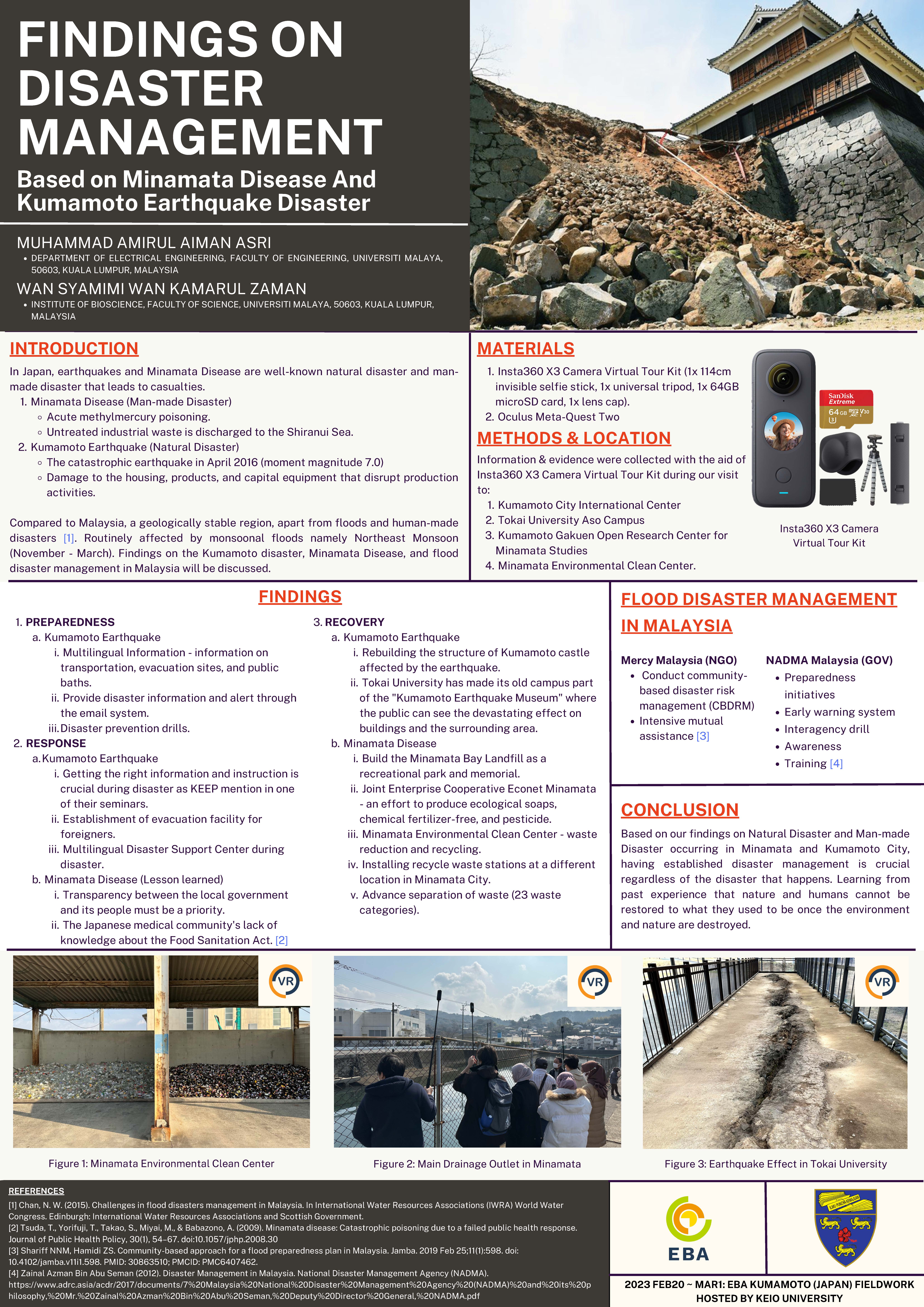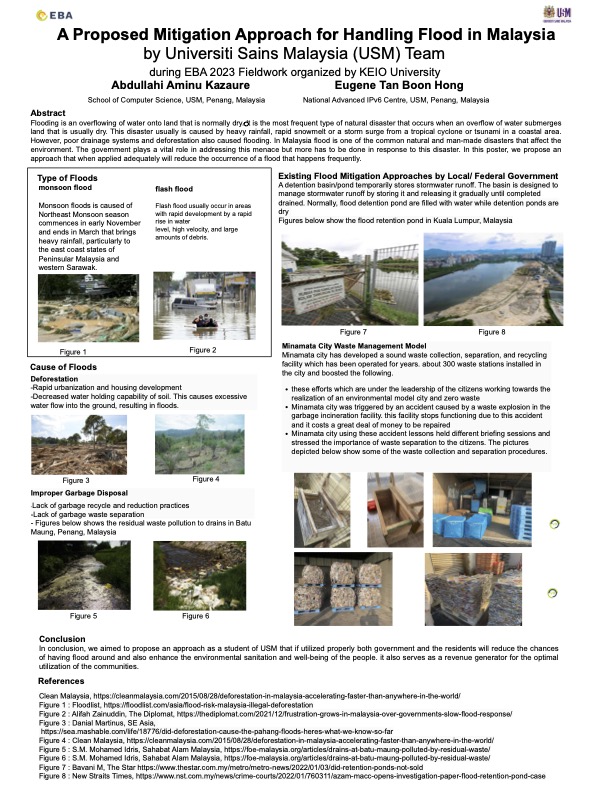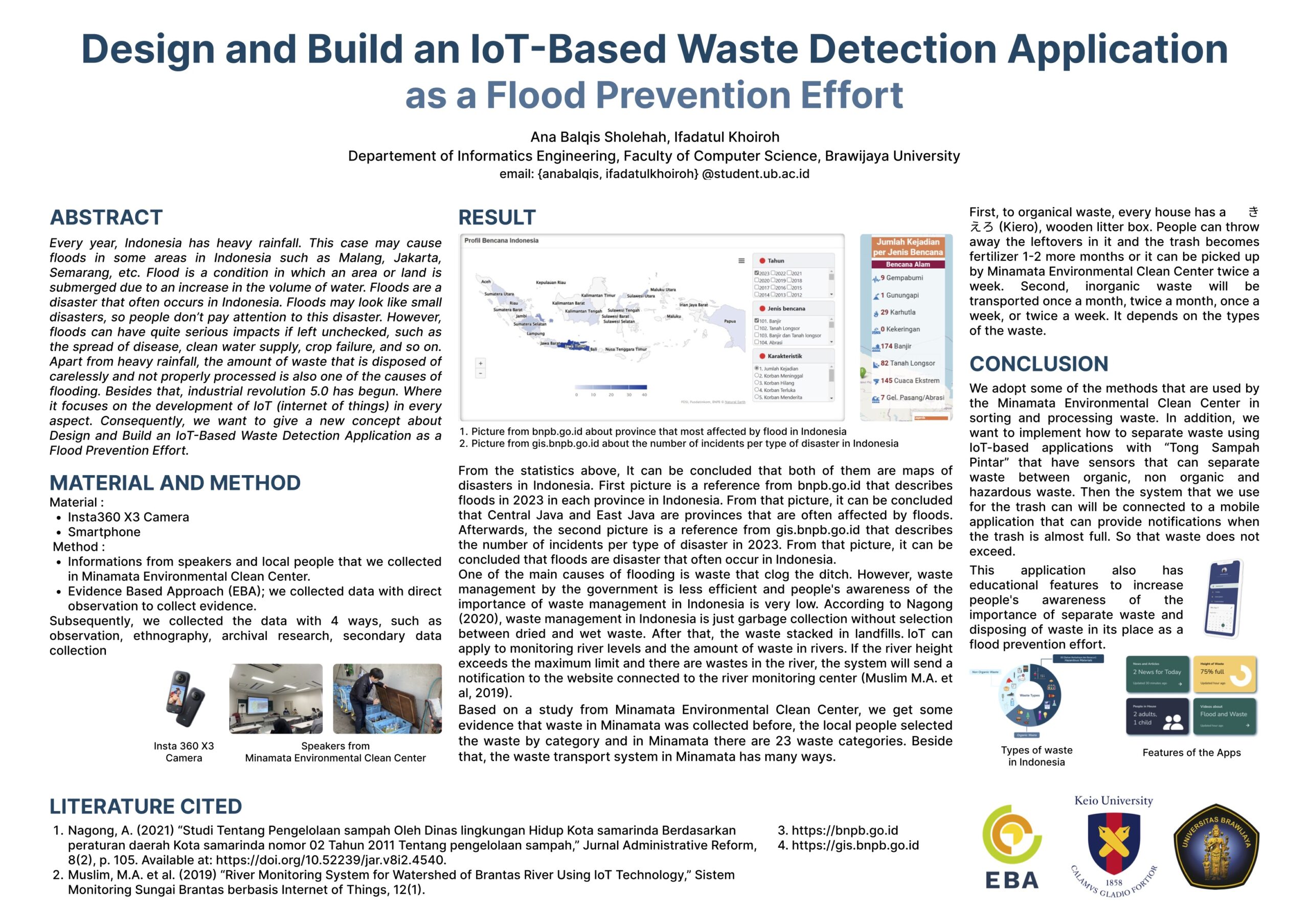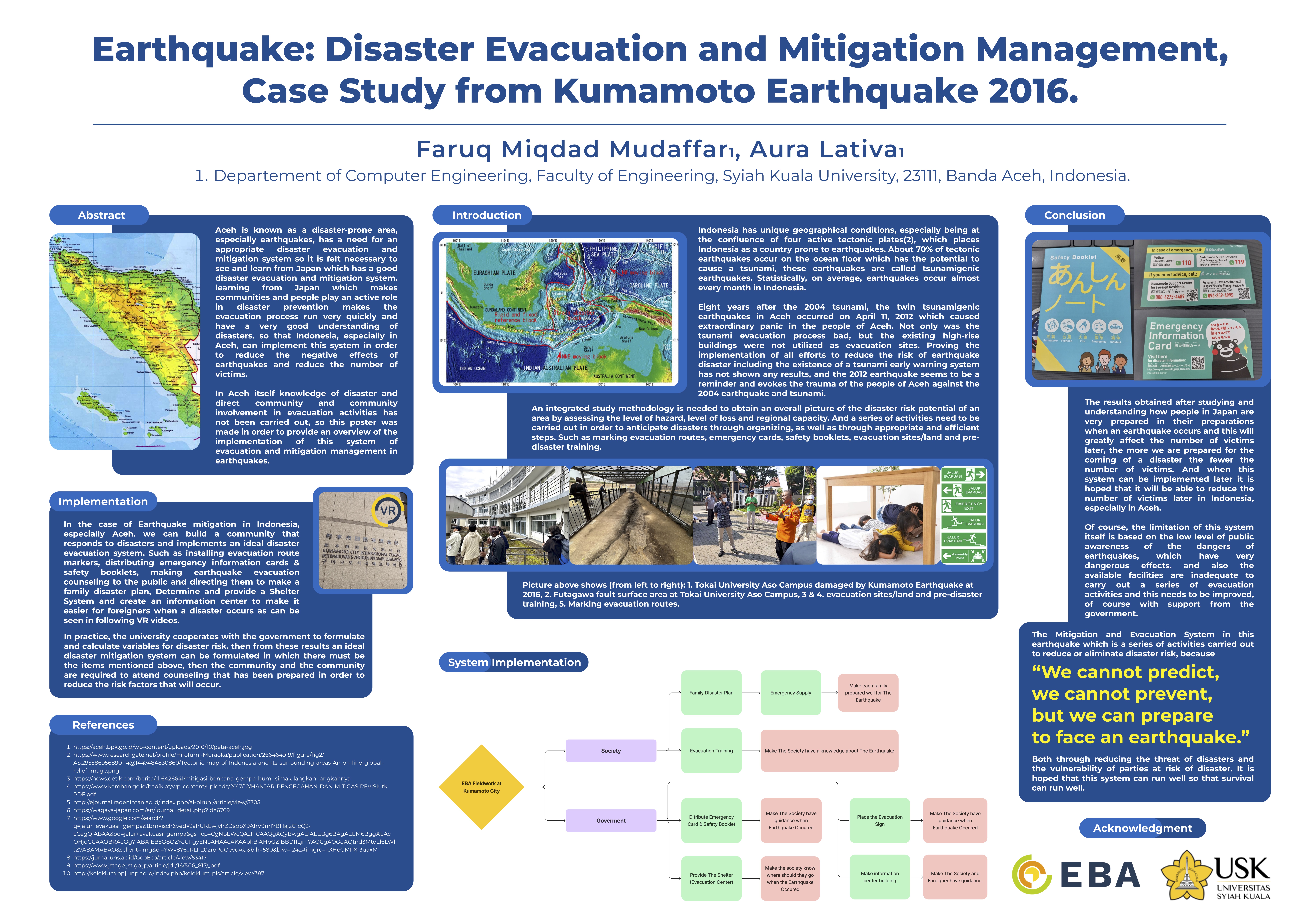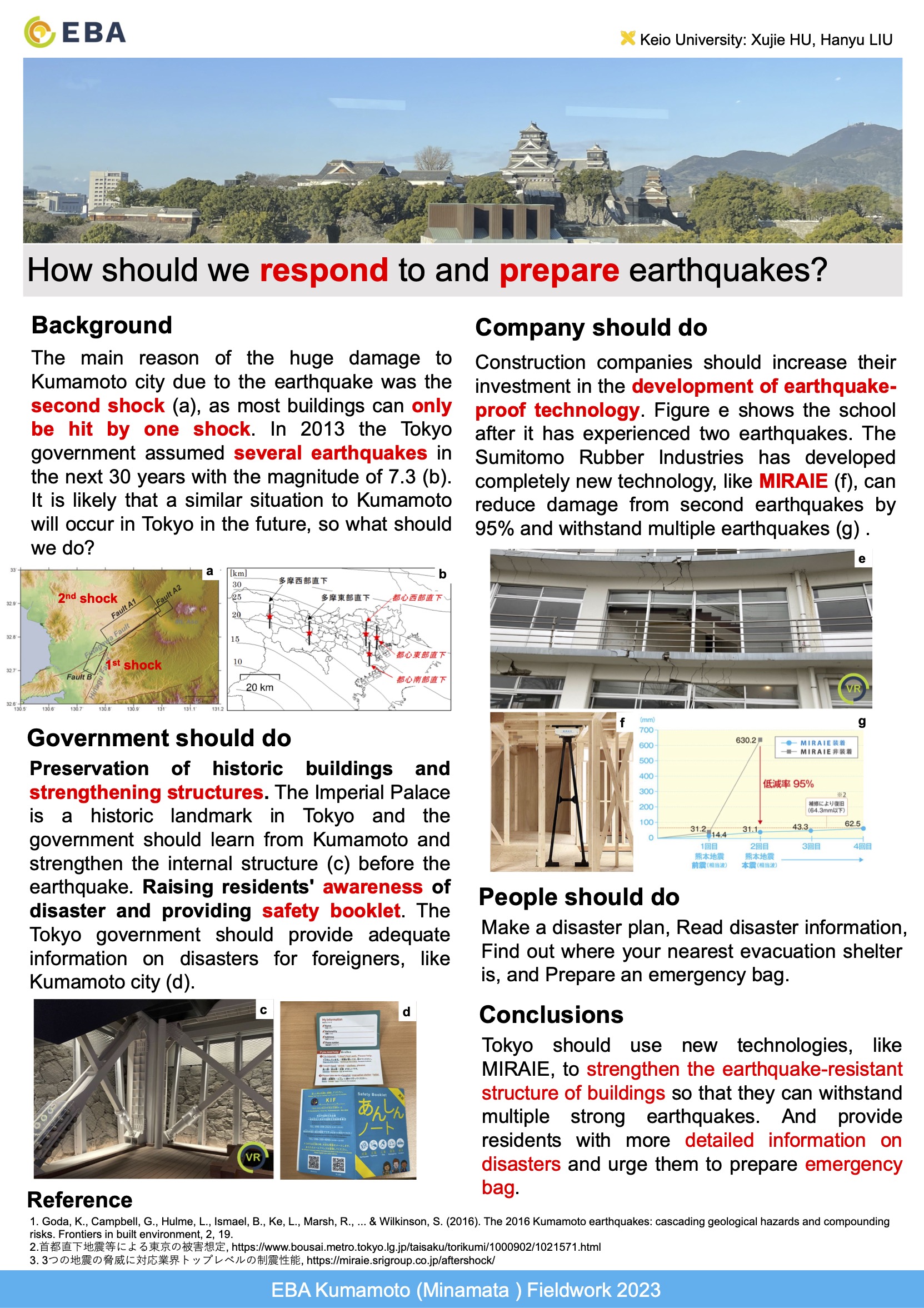EBA Kumamoto Fieldwork 2023
Period: January~ March 2023
-
-
Pre-Online session: January~
-
Fieldtrip: February 20- March 1
-
Final Presentation (Online): 18:15 (UTC+9)~, 29 March *The session was live-streamed on Youtube. (CLICK HERE!)
-
Participants: 17
Indonesia
Brawijaya University (UB)
-
-
Ana Balqis Sholehah (Faculty of Computer Science)
-
Ifadatul Khoiroh (Faculty of Computer Science)
-
Hasanuddin University (UNHAS)
-
-
Nur Hasana Abunawas (Faculty of Engineering)
-
Zakiah Novacastry Niswar (Faculty of Engineering)
-
Syiah Kuala University (USK)
-
-
Aura Lativa (Faculty of Engineering)
-
Faruq Miqdad Mudaffar (Faculty of Engineering)
-
Japan
Keio University (KEIO)
-
-
Hu Xujie (Graduate School of Media and Governance)
-
Liu Hanyu (Graduate School of Media and Governance)
-
Malaysia
University of Malaya (UM)
-
-
Muhammad Amirul Aiman Bin Asri (Faculty of Engineering)
-
Wan Syamimi Binti Wan Kamarul Zaman (Faculty of Science)
-
University of Science Malaysia (USM)
-
-
Eugene Tan Boon Hong ( National Advanced IPv6 Centre)
-
Kazaure Abdullahi Aminu (Faculty of Computer Science)
-
Fieldwork Host
-
Eliko Akashi (Keio University Global Research Institute)
-
Kiyoko Itagaki (Keio University Global Research Institute)
-
Leandro Navarro Hundzinski (Keio University Graduate School of Media Design)
-
Marcos Maekawa (APNIC Foundation)
-
Zhuo Qiannan ( Keio University Graduate School of Media and Governance)
Summary:
In this program, participants learned and practiced the EBA method, which consists of Data Collection, Data Analyzation, Data Visualization, and Storytelling, through exploring the question, “What action you (as your university student), will take to tackle the disaster in your local area?”.
This time the field: Kumamoto prefecture, located on Kyushu island, is known in Japan as a haven for nature lovers, with wild rivers and active volcanoes: such as Mount Aso, one of the world’s largest active volcanoes and the largest volcano in Japan. Taking advantage of such rich nature and environment, a variety of agricultural activities are conducted in the city. On the other hand, they experienced devastating quakes in April 2016, which claimed over 270 victims and partially damaged some 43,000 homes around that area. Kumamoto Prefecture also experienced deadly torrential rains that brought floods and mudslides that hit southwestern Japan in July 2020.
Participants visited several places in Kumamoto prefecture, then collected evidence of what residents/ community/local government experienced natural/man-made disasters, and how they have been tackling to create disaster resilient society.
After evidence collection, participants moved to Keio University, Tokyo, and started to create final outcomes together with a teammate.

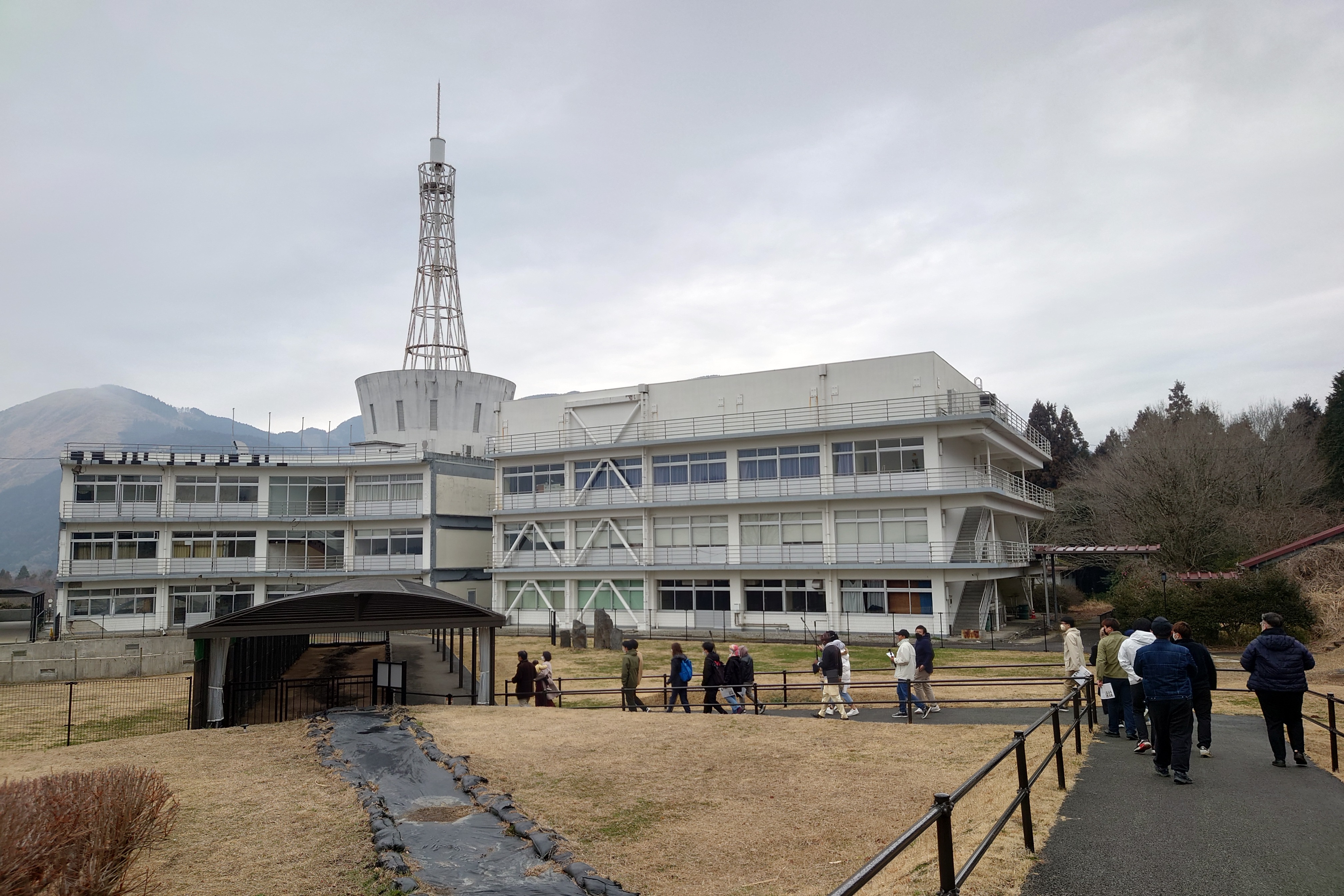
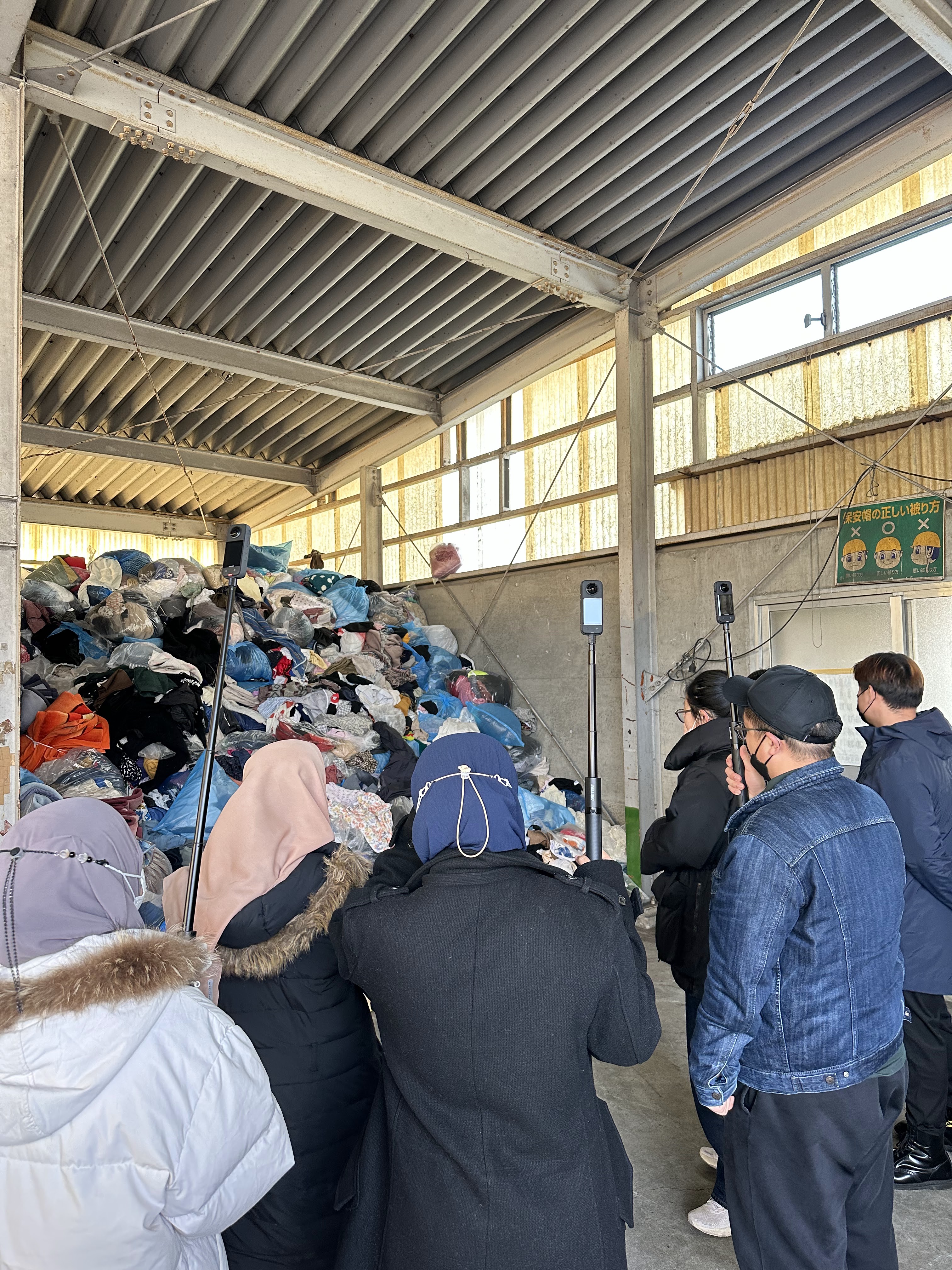

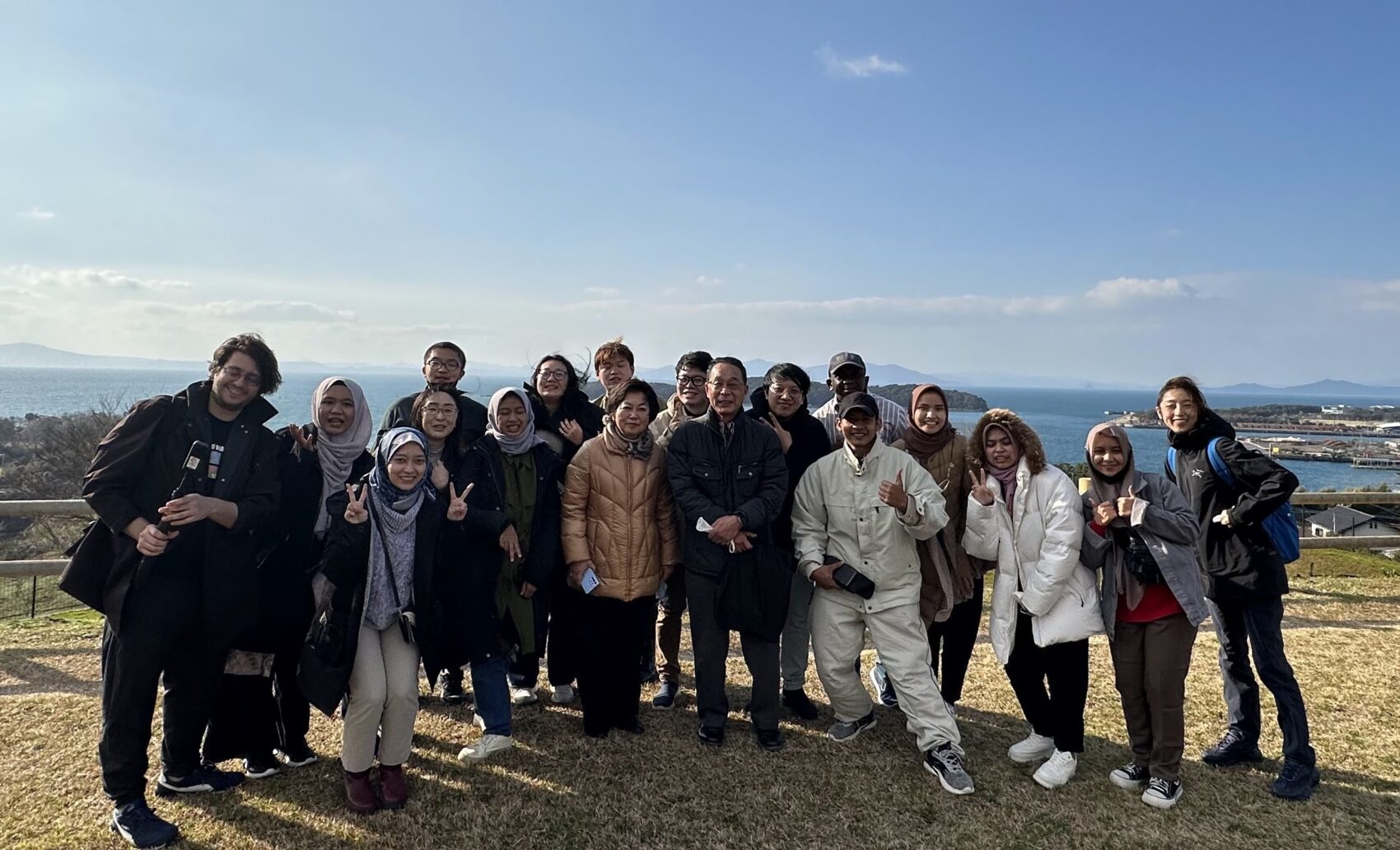
Final Outcome (Poster Presentation) will be shared at the final presentation from 18:15 (UTC+9), 29 March 2023.
Order of the Presentation: 1.UM, 2.USM, 3.UB, 4.USK, 5.KEIO, 6.UNHAS

